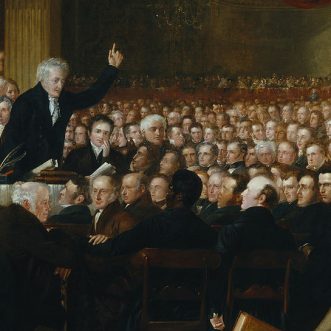
Philanthropy
It probably feels great to show your love for humanity by giving away your fortune once you’ve made it.
What if you showed your love for humanity in the way you make it in the first place?
Then there’d be no need.

It probably feels great to show your love for humanity by giving away your fortune once you’ve made it.
What if you showed your love for humanity in the way you make it in the first place?
Then there’d be no need.
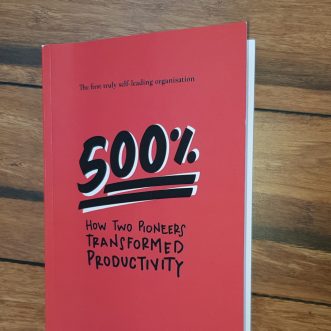
I realise I forgot to mention the book pictured in my earlier blog this week.
It’s well worth a read, sadly only available on Amazon.
Here’s my takeaway from reading it:
Sustainable improvement only came when the owners, Julian and Andrew did three things:
As a result, the business became not just self-managing, but self-leading. In other words, they built a scalable, replicable system for making and keeping promises, that didn’t need them to be there.
If a manufacturing business can do this, then so can you.
And I’d love to help.

When you grow a business by adding functions – accounts, sales, customer service, warehousing, delivery – you inevitably add overhead. Because every new function you add introduces the need for handovers, often several of them. Running the business becomes a matter of co-ordinating handovers and catching the things that fall between functions, rather than making and keeping promises to customers.
All of this costs money. You’ve introduced transaction costs. At the extreme, the thing the business is supposedly here to do is the thing that suffers – because it’s the only part that can give. So you get turkey twizzlers for school dinners at a higher cost than if a local dinner lady cooked from scratch every day.
The answer is to pick a unit of growth that’s focused on the customer, and replicate it. That unit is the process of making and keeping a promise to them.
Let one Role run the entire process of making and keeping a promise to a customer from beginning to end, with no handovers, no transaction costs, no overhead, and you’ve got a recipe for efficient scalability, that works within the firm and beyond. It’s also more fun for the people running the process.
More efficiency, more impact, more fun. What’s not to like?

Except when it isn’t.
Often, the devil is in the big picture. The model you’re working to. Unquestioningly, perhaps even unconsciously.
That’s what Julian and Andrew realised at Matt Black Systems. After a decade of attempts to turn around their business, with LEAN consultants, re-organisations, and efficiency drives, none of which worked, the devil wasn’t in the fine detail of processes, nor was it in the employees. It was in the model the business was built on – top-down, hierarchical, siloed into specialisms, command and control.
Alternative models aren’t necessarily easy, but they give you the opportunity to choose your problems:
“The organisational design you adopt will determine the set of problems you have to live with. Often the design is considered a ‘given’ its problems unavoidable. We chose to change our model because the problems we had were threatening our business. We wanted a better set of problems.”
Once Andrew and Julian had realised this, it took just 18 months to transform their business to the point where productivity had increased by 500%; customers were delighted, and staff found their work rewarding personally and financially, without killing themselves in the process.
Julian and Andrew could leave the building, never to return.
Of course, business-threatening problems are a great spur to radical change. But you don’t have to wait till then.
You could pick your problems early, and walk out of your business when you choose.

Today, I saw yet another advert for alcohol made from waste food. This time, rum distilled from banana skins.
Maybe it’s me, but I can’t help thinking there are better uses for food waste – even inedible banana skins. For example, they could be turned into energy through anaerobic digestion, or composted to regenerate depleted soils.
In other words they could contribute to solving urgent, existential problems for humankind.
I’m all for enriching life. But last time I looked there were a dozen or so rums available in Sainsburys, and only one home for humans.
As humans, we have amazing resources for making change.
Let’s not waste them on gimmicks.

Ever since I first saw the water clock above the Neal’s Yard wholefood shop, I’ve enjoyed the work of Tim Hunkin. Probably for the same reason I liked to be called a software engineer. I love finding out how things work, and making them work better.
So I was delighted to discover his remastered ‘Secret Life of‘ series on YouTube.
When you know how something works, it stops being ‘some kind of magic’ and becomes a tool to support what you’re really trying to achieve. You can even start to play with it a little, bend it, re-purpose it to create even more value.
What would ‘The Secret Life of <Your Business>‘ reveal to the people who have to use it?
Here’s the episode about the photocopier:
https://youtu.be/FKVO28gTu-g

Ma.
The gaps between things.
The pauses between words or notes.
The white space on a page.
“a holder within which things can exist, stand out and have meaning.”*
“the emptiness full of possibilities, like a promise yet to be fulfilled.”*
The places where we can come alive for each other.
Let’s leave room in our processes for ma.
*from Wawaza.com
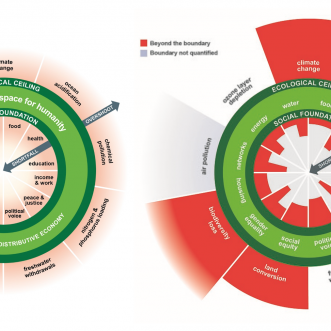
What if a business became a place where people co-operate to create value, in the form of products and/or services that will help their clients to live in the just space for humanity ? A business makes a profit of the money it receives from those others more than covers all the costs of delivering the goods.
So far, so good.
And?
Why does this kind of business need to make a profit? So it can expand.
Why does this kind of business need to expand? So it can help more people to live in the just space for humanity.
This could be a flywheel that doesn’t lead inexorably to self-destruction.
Or one that we might even decide to stop.
Shouldn’t we be switching to it?
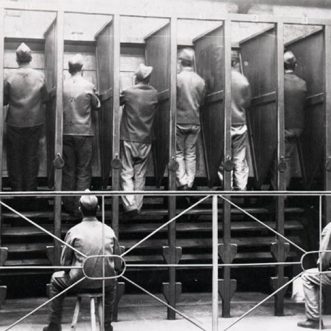
A business is a place where people co-operate to create value, in the form of products and/or services that others want. A business makes a profit of the money it receives from those others more than covers all the costs of delivering the goods.
So far, so good.
But.
Why does a business need to make a profit? So it can expand.
Why does a business need to expand? So it can make more profit.
For the last 200 years this flywheel has driven everything that humans do.
Last year, we saw it slow down a bit, and caught a glimpse of what we’re missing.
Are we sure we want to get back on it?
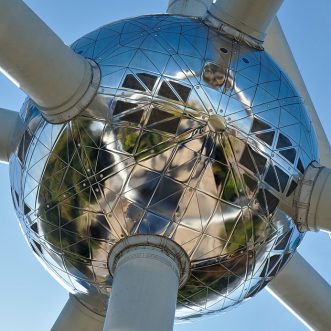
With a few exceptions, atoms don’t like to be alone.
They prefer to join with other atoms. They can’t help themsleves, they’re just built that way.
If they stick to their own kind, together they make an element. A useful building block. When they combine with different atoms, they create a compound, generating properties none of the constituents have on their own.
Almost all the interesting things in our varied world are the result of atoms combining with atoms that are different from themselves, repeating the process until something durable emerges.
Inter-connection with different others is our natural state.
We can’t help ourselves, we’re just built that way.
Atom by atom.